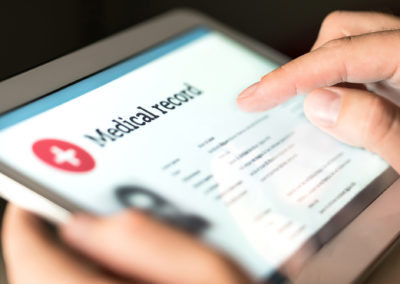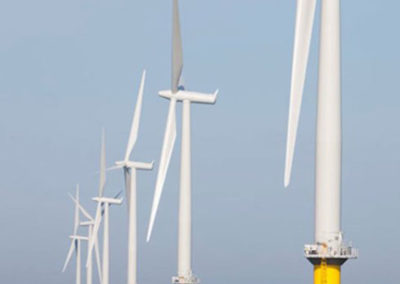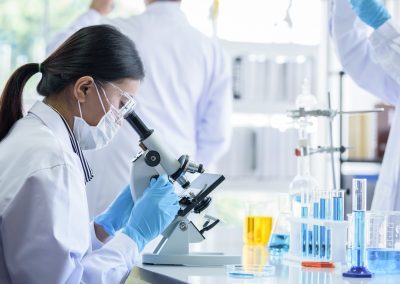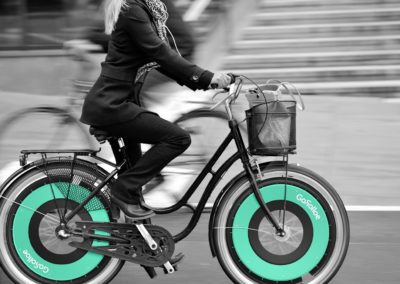Getting the world moving, one journey at a time
The transport sector has underpinned economic growth and development through the interconnectivity of networks to move people and goods locally, nationally and internationally according to need and demand.
But people’s commuting habits have changed massively and quickly in response to lockdowns and travel and transport restrictions. What will transportation look like in the future? And what steps will we take in order to get there?
Air travel
The future of travel is ‘up in the air’, despite the fact that air fleets have been very much on the ground for a large chunk of the year. Already under fire for their emissions levels, the COVID-19 pandemic has opened up a whole new set of challenges for the sector. Our researchers work closely with a number of industry leaders on manufacturing and fuel efficiency, but also have a huge range of expertise on future-planning for the sector as a whole. Can the big carriers instead find different uses for their vehicles, the resources from their supply chains or apply their technical architecture in new and innovative ways, such as Imperial Business Partners member AirAsia have managed.
Cars and personal vehicles
Mixed messaging around moving around in the current climate has thrown more light on the importance of addressing personal transportation. Cycling and micro-mobility (such as electric scooters, which currently have limited legal coverage in the UK) has grown in interest over the past few months, but supply chains are running thin.
Instead of using public transport, commuters have been encouraged to use personal vehicles, which has a huge knock-on effect on carbon emissions, especially in urban areas, with further challenges such as increased potential for traffic accidents and limited town centre parking, and increased urban air pollution – which could increase COVID-19-linked mortality rates. One Imperial startup, The Tyre Collective, is at least addressing the problem of tyre wear on producing airborne particulates..
Could this be the shot in the arm for investment and public buy-in for automated transportation? And how will public transport networks respond to a huge reduction in revenue as we change our work and travel habits? Experts from our specialist consultants at the Transport Strategy Centre and our Centre for Transport Studies have provided expert insight and research for projects around the world.
Check out some of our startups addressing the needs in e-mobility:
- Bumblebee Power – wireless charging for a range of electric vehicles and devices
- Dash – corporate and business e-mobility infrastructure and management systems
- Furo Systems – bespoke electric vehicle design and manufacture
Freight, haulage, shipping and distribution
Resource availability has been stretched as a result of the coronavirus pandemic, with international travel under huge scrutiny. Keeping our globalised world connected through shipping and freight has been vital to ensuring medical supplies and essential products get to their destinations.
But with less manufacturing and shut-downs to entire sectors, supply chains will take some time to reignite, and what will the demand be for items that people lived without for so long? And how can we reduce the impact on the environment from a restoration of these high-intensity routes? Low-carbon travel across populations as well as within business needs and cargo distribution will also play a huge role on meeting climate emissions targets.
Urban planning and development
Our towns, cities and the places we visit will increasingly be designed by data, and by how residents (or ‘users’) experience the world around them. Air quality improvements could be fast-tracked, and with fewer polluting vehicles on the road, there’s an opportunity to put all of the ethical ideas of environmental sustainability into action, protecting the health and the natural environment. Our experts and Tech Foresight team investigate how future technologies and social interventions could change urban air for city dwellers?
New fuels and battery technology for transport
Since the launch of the EU’s Hydrogen Strategy in the summer, innovations in fuel cell technology and methods of adopting and applying hydrogen fuel for transportation and energy storage have been moving beyond niche circles of interest and into policy and public discourse.
In September, the UK revealed that it had shown the efficacy of hydrogen fuel for powering trains, which could have huge implications for reducing pollution from rail transportation.
Experts at Imperial have been at the forefront of hydrogen fuel cell technology for generations, and startups such as H2GoPower, Bramble Energy and RFC Power are already well-placed to provide solutions for the industry, while the experts at Galvanic Energy can provide technical analysis and assessments of hydrogen and battery technologies.
What will the Underground look like in 100 years? Richard Anderson Managing Director of the Transport Strategy Centre talks to My London
Richard Anderson thought the Underground would still be recognisable in 50 to 100 years – and this is because it hasn’t changed much since it was created.
“It’s worth looking back 50 to 100 years and just thinking about what’s actually changed. The absolute fundamentals of the Tube haven’t changed that much.
“It would be quite heroic to think that would change, the basic principles of the railway seem to have worked for 180 years.” Richard said.
But he said while the Tube might look similar, some technology is “bound” to change, and that in the next 20 years we will see a significant shift towards the automation of the Underground.
“Within the next 20 years, you’ll probably be experiencing completely seamless travel without any need to check your tickets as you go through barriers.”
Mr Anderson said the roles of Underground staff will change with commuters receiving highly personalised information relating only to their journey. He also thinks there will be more “micro-mobility”, such as walking and cycling in the future, with cities looking different at street level. But, despite this, Mr Anderson doesn’t believe autonomous cars will catch on anywhere near as much as the mass transit.
“Some metros around the world can shift 80,000 passengers per hour per direction,” he said. “I can’t imagine another form of transport – certainly not private autonomous vehicles – could ever match those kinds of capacities.
“My bet is that the city will still exist and the need for moving people in high density will exist so therefore Tubes will still exist.”
The fight to improve air quality
Air pollution has become central to scientific and policy concerns, as 91% of the world’s population now live in places where air quality exceeds World Health Organization (WHO) guidelines, with around seven million people dying from the effects of air pollution annually. Imperial is to become the world’s leading centre for the study of air pollution.
How the global transport sector is responding to COVID-19
As a result of the COVID-19 outbreak, transport providers have to change how they manage their organisations and serve their customers. The Transport Strategy Centre at Imperial have summarised these practices and approaches to help others optimise their responses.
Perfecting global transport performance
The Transport Strategy Centre provide benchmarking analysis and the identification of global best practices in the rail, metro and light rail, bus and air transport sectors to help the leaders of these companies improve the performance of their systems and, ultimately, the services they provide to their customers.
Find out how Imperial can help you with your specific needs be they immediate or a longer term goal.
Who to contact:

Vibhor Jajoo
Engagement Manager
For Chemical Engineering, Earth Sciences, Bio-Engineering, Bio-Tech and Medical Devices.



